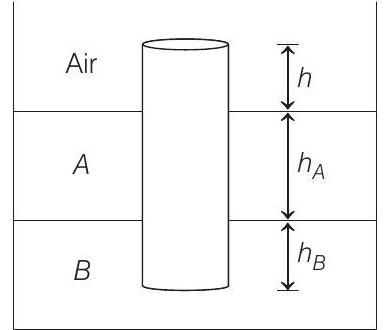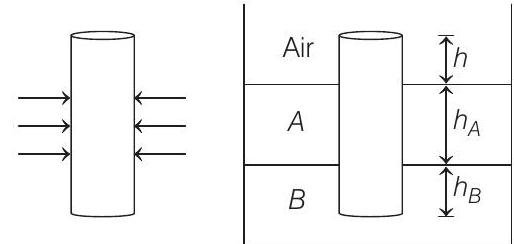Properties of Matter 2 Question 19
19. A uniform solid cylinder of density
(2002, 5M)

(a) Find the total force exerted by liquid
(b) Find
(c) The cylinder is depressed in such a way that its top surface is just below the upper surface of liquid
Show Answer
Answer:
Correct Answer: 19. (a) Zero (b) 0.25 cm (c) g / 6
Solution:
- (a) Liquid

(b) In equilibrium
Weight of cylinder
Let
and upthrust on the cylinder
= upthrust due to liquid
Equating these two,
or
Substituting,
In the above equation, we get
(c) Net upward force
Substituting the values of






